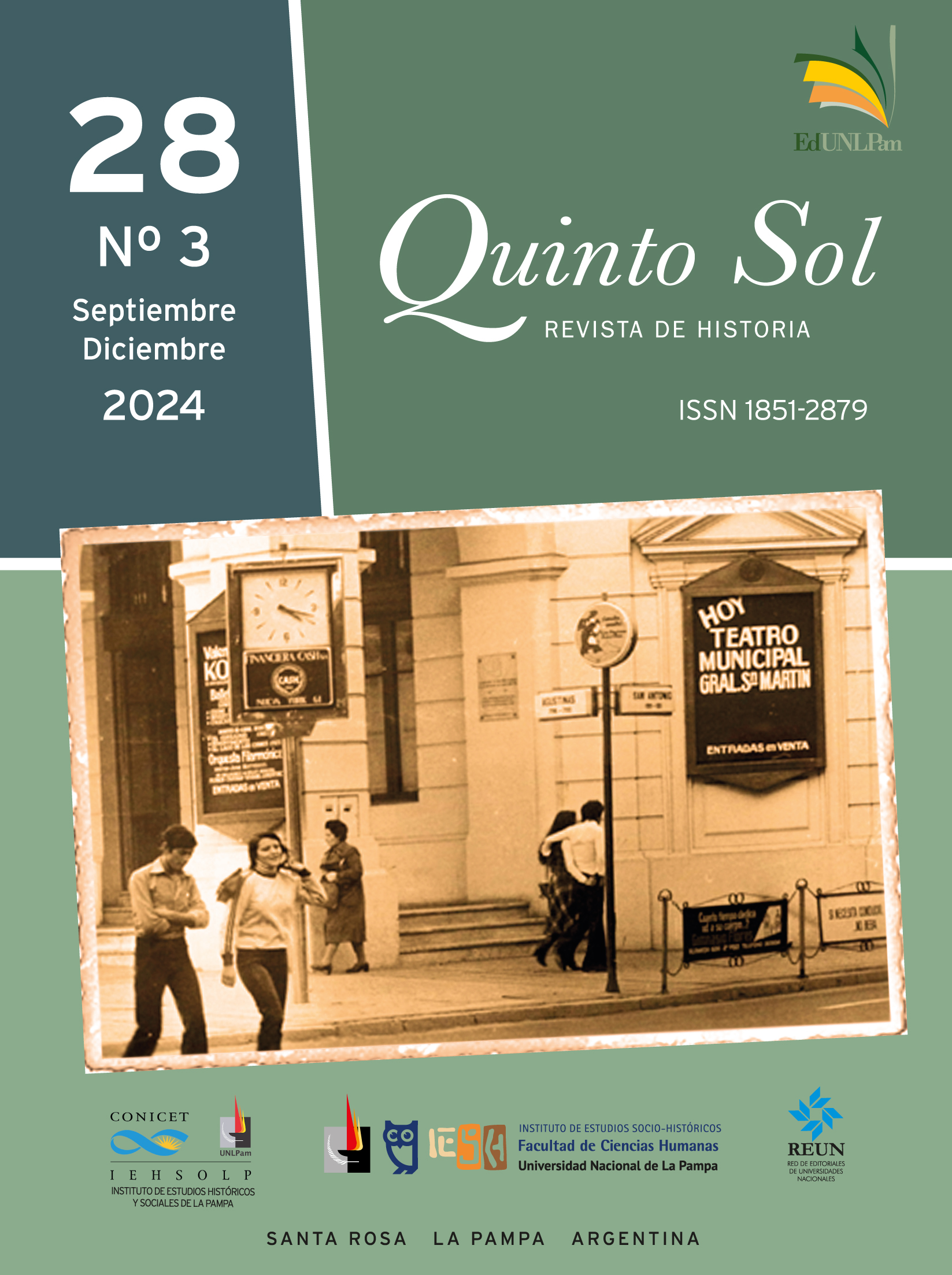General Camps and the productive dimension of the last dictatorship. Actors, debates and meanings in the “Timerman debate” (1981-1982)
DOI:
https://doi.org/10.19137/qs.v28i3.8253Keywords:
communication strategies, mass media, dictatorship, propagandaAbstract
This paper examines a series of media operations which took place between 1981 and 1982, with the aim of counteracting the impact of the denunciations made abroad by one of the victims of the dictatorship, Jacobo Timerman. The research investigates these operations, situating them within the framework of the so-called "psychological actions" and reconstructs the role played in these practices by General Ramón Camps, former chief of the Buenos Aires Province Police, who had been in charge of Timerman's detention and clandestine captivity. In this line, the article studies the main topics, strategies and supports used, and the plots and actors involved in these actions, highlighting the participation of media entrepreneurs, journalists, politicians, members of the Catholic Church, members of the Jewish community, the military and the police.
Downloads
References
Borrelli, M. (2011). Voces y silencios: la prensa argentina durante la dictadura militar (1976-1983). Perspectivas de la Comunicación, 4(1), 24-41.
Camps, R. (1982). Caso Timerman. Punto Final. Tribuna Abierta.
Camps, R. (1983). El poder en la sombra. El affaire Graiver. RO.CA. Producciones.
Canelo, P. (2008). El Proceso en su laberinto. La interna militar de Videla a Bignone. Prometeo.
Calveiro, P. (1998). Poder y desaparición. Los campos de concentración en Argentina. Colihue.
Cristiá, M. y Schenquer, L. (2022). La “acción psicológica” en el ámbito internacional. Los planes de comunicación de la dictadura argentina en el extranjero (1976-1978). En L. Schenquer (Comp.) Terror y consenso. Políticas culturales y comunicacionales de la última dictadura (pp. 80-107). Editorial de la Universidad Nacional de La Plata.
Feld, C. y Salvi, V. (Eds.) (2019). Las voces de la represión. Las declaraciones de los perpetradores de la dictadura argentina. Miño y Dávila.
Franco, M. (2002). La “campaña antiargentina”: la prensa, el discurso militar y la construcción de consenso. En J. Casali de Babot y M. V. Grillo (Eds.) Derecha, fascismo y antifascismo en Europa y Argentina (pp. 195-225). Universidad de Tucumán.
Gamarnik, C. (2017). La imagen de la “subversión”: cómo se construyó la imagen del enemigo (1976-1979). Sudamérica, 7, 19-52.
Iturralde, M. (2017). El terrorismo de Estado en noticias. Las operaciones de “acción psicológica” en Clarín durante los primeros años de la dictadura. Pasado Abierto, 5, 137-156.
Jensen, S. (2010). Los exilados. La lucha por los derechos humanos durante la dictadura. Sudamericana.
Kahan, E. (2016). Esto no es un Holocausto. El testimonio de Jacobo Timerman y la represión a los judíos durante la última dictadura militar. En G. Águila, S. Garaño y P. Scatizza (Coords.) Represión estatal y violencia paraestatal en la historia reciente argentina: Nuevos abordajes a 40 años del Golpe de Estado, (pp. 319-339). Universidad Nacional de La Plata.
Rama, C. (2023). La causa “Camps” (1984-1987): el primer juicio a cuadros de la policía bonaerense por violaciones a los derechos humanos cometidas durante la última dictadura. Boletín del Instituto Ravignani, 58, 85-112. https://doi.org/10.34096/bol.rav.n58.11761
Rein, R. y Davidi, E. (2011). El caso Timerman, el establishment y la prensa israelí. Revista Ciclos, 19(38), 221-248.
Risler, J. (2018). La acción psicológica. Dictadura, inteligencia y gobierno de las emociones 1955-1981. Tinta Limón.
Timerman, J. (2000). Preso sin nombre, celda sin número. De la Flor. (Original publicado en 1981).
Schenquer, L. (Comp.) (2022). Terror y consenso: políticas culturales y comunicacionales de la última dictadura. Editorial de la Universidad Nacional de La Plata.
Sticotti, J. (2021). “La hora de la verdad”: un análisis de las emisiones del noticiero 60 Minutos, antes, durante y después de la Guerra de Malvinas (1982). Kamchatka, 18, 297-318.
Downloads
Published
Issue
Section
License
Copyright (c) 2024 Quinto Sol

This work is licensed under a Creative Commons Attribution-NonCommercial-ShareAlike 4.0 International License.
When submitting their contributions, authors must declare that they have the permission of the file or repository where the documents that are attached to the work were obtained, whatever their format (unpublished manuscripts, images, audiovisual files, etc.). Such permission authorizes their publication and reproduction, releasing the journal and its editors from any liability or claim from third parties.
Likewise, authors must adhere to the Creative Commons license called "Attribution - Non-Commercial CC BY-NC-SA", through which the author allows copying, reproducing, distributing, publicly communicating the work and generating derivative works, as long as the original author is properly quoted and acknowledged. It is not allowed, however, to use the work for commercial purposes. Authors may establish additional agreements for the non-exclusive distribution of the version of the paper published in the journal (for example, placing it in an institutional repository or publishing it in a book), with the acknowledgment of having been published first in this journal.
The publication of content in this journal does not imply any royalty or charge for taxpayers.
Quinto Sol adheres to the DORA (Declaration on Research Assessment) signed in San Francisco, California, on December 16, 2012, and to the Declaration of Mexico (Joint Declaration LATINDEX - REDALYC - CLACSO - IBICT).










4.png)
2.png)












_(2).png)


1.jpg)



1.jpg)





